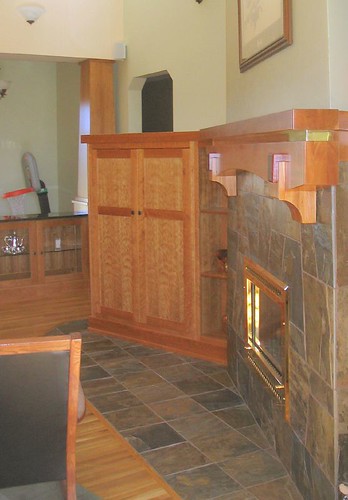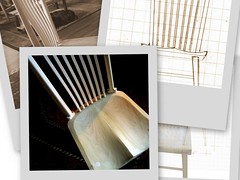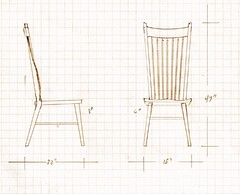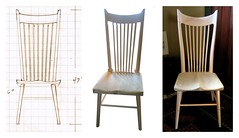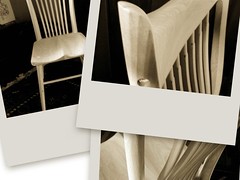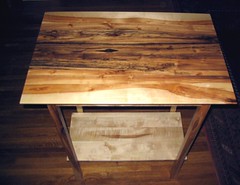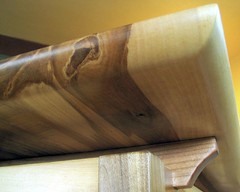Whether you are building a new home or remodeling, you can never have too much storage. You could buy furniture specifically designed for storage (china cabinets, dressers) but then you would have that much more to dust and vacuum around … and besides, you may not have room for more furniture.
Or, you could install “built-ins” which stay with the house and increase its resale value. Design as much storage as possible into your remodeling project or new home. Custom built-ins can be economical, attractive, functional and best of all, make your life easier.
Well designed built-ins can provide convenient storage in every room and contain clutter. Built-ins make small rooms seem larger and more open because they are attached to the walls and take up less floor space.
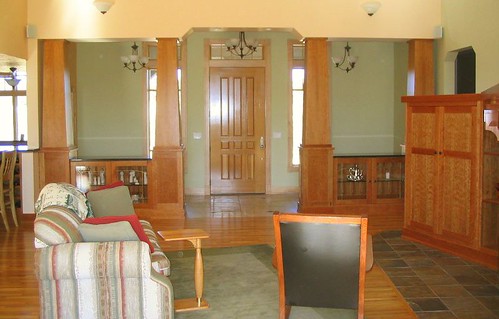
Custom built-ins can fit an oddly shaped corner or a closet you want to open up. Your furniture may be arranged around the focal point of a fireplace (above and left) yet you want to be able to watch movies without rearranging. Solve this dilemma with a built in media center flanking the fireplace. Combine the media cabinets with display shelves for a beautiful and functional living room focal point. The media center cabinets hide the television and any other clutter when not in use.
You’ll need plenty of built-in storage in a craft room, often located near the kitchen or in the laundry room or garage. No matter what your craft or hobby (sewing, woodworking, scrapbooking, etc) you can get customized drawer and cabinet inserts to fit your supplies and tools perfectly. Consider the benefits of being that organized!
 Other possible built-ins to consider for your home are a bedroom storage wall or built-in dressers, window seat benches that double as storage with recessed bookcases on the sides, a bookcase wall with media center, mud room storage benches and wall-hung cubbies, wardrobes to organize your closets, a snack bar, wet bar or coffee bar in the family room, a dining booth and a built-in desk near the kitchen (left,) a craft room storage wall with workbench, drawers and display cases, bookshelves under the stairway, dining room wall hutch or display niches for art, recessed between wall studs.
Other possible built-ins to consider for your home are a bedroom storage wall or built-in dressers, window seat benches that double as storage with recessed bookcases on the sides, a bookcase wall with media center, mud room storage benches and wall-hung cubbies, wardrobes to organize your closets, a snack bar, wet bar or coffee bar in the family room, a dining booth and a built-in desk near the kitchen (left,) a craft room storage wall with workbench, drawers and display cases, bookshelves under the stairway, dining room wall hutch or display niches for art, recessed between wall studs.
 This custom built dining room hutch (left) by Timothy’s Fine Woodworking, leaves plenty of room to expand the table for large dinner parties. The hutch has in-cabinet lights to highlight the china collection as well as lots of practical storage.
This custom built dining room hutch (left) by Timothy’s Fine Woodworking, leaves plenty of room to expand the table for large dinner parties. The hutch has in-cabinet lights to highlight the china collection as well as lots of practical storage.
There are almost endless possibilities for making more effective use of the space in your home by adding built-ins. Take advantage of the numerous cabinetmakers and woodworkers in your city or town, who can customize your home with built-in furniture, storage cabinets and display shelves. To find a woodworker who can work with you on custom built-ins, start with your local phone directory listings under “Cabinets” or “Furniture Designers & Custom Builders.”
